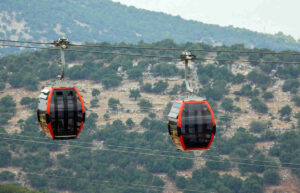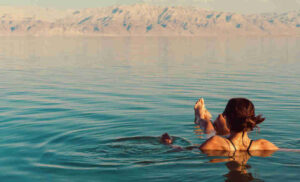Staying in a Bedouin camp in Wadi Rum is one of the great attractions of this protected reserve, a UNESCO World Heritage Site. Not only because of the spectacular environment that surrounds this type of accommodation, but because it is the best way to immerse yourself in Bedouin culture, as they are all decorated with that taste and offer services typical of that culture, updated with modern comforts. In this post we tell you more, so you can assess the option of spending the night in one of them.
Where are these Camps Located?
The Bedouin camps of Wadi Rum are spread throughout the protected area, and also in its immediate surroundings. They all have in common their optimal integration with the landscape because, although they are many and varied, they occupy a tiny part of the more than 70,000 hectares that make up the reserve.
It can be said that the two areas with the highest concentration of Bedouin camps are in the main village of the desert (Wadi Rum Village) and also in the village of Diseh, located ‘at the gates’ of the reserve, at its main entrance from the north. The rest of the camps, spread throughout this vast area, can have very varied locations, in the open or sheltered by rock formations. And to access them it is necessary to have 4×4 vehicles or dromedaries, since the few paved roads in the area do not reach them.
It should be taken into account that, in addition to the Bedouin camps, in Wadi Rum Village it is also possible to find hostel-type accommodations, the so-called lodges or ecolodges, in stable constructions, with other types of attractions that we analyze in a separate post.
What are these Tourist Complexes like?
Although Bedouin camps have a series of characteristics in common, each complex has its particularities, determined mainly by its category and level of comfort offered. For example, the most basic ones are temporary, which are assembled and disassembled depending on different circumstances, with small goat skin tents and also removable community services, such as bathrooms.
At the opposite extreme are the stable camps, with a fixed ‘construction’ layout, such as small separating walls, pavement or slab platforms to give stability to the tents. The premium category complexes, called ‘luxury camps’, do not skimp on amenities, offering air conditioning in the tents and private bathrooms with hot water in them.
There is no shortage of community spaces, carefully organized with a typically Bedouin decoration. On the one hand, there are the large tents where performances and events can be organized. And on the other hand, open areas as patios or terraces, with individual tables and a bonfire in the center, around which meetings are organized.
These open areas are ideal for tasting the classic Bedouin tea of welcome or fraternization. And they also usually have a zarb-type barbecue: a kind of oven submerged in the ground where lambs, vegetables, chicken and other foods are roasted in the local style.
Types of Tents
Finally, it should be noted that there are two main types of tents in a Bedouin camp in Wadi Rum. On the one hand, there are those with a fine metal structure covered with canvas, usually with a square plan and a roof topped with a very characteristic and elegant pyramid shape. They are very spacious, creating an open space inside, ideal for a double or family room.
And on the other hand, in recent times, tents inspired by glamping have emerged, with a transparent synthetic structure in the shape of a spherical balloon, which aim to facilitate the contemplation of the stars at night, and can be covered with curtains to guarantee privacy. A less traditional option but one that also manages to integrate easily into the environment and puts a twist on the activity of stargazing, so popular here.



